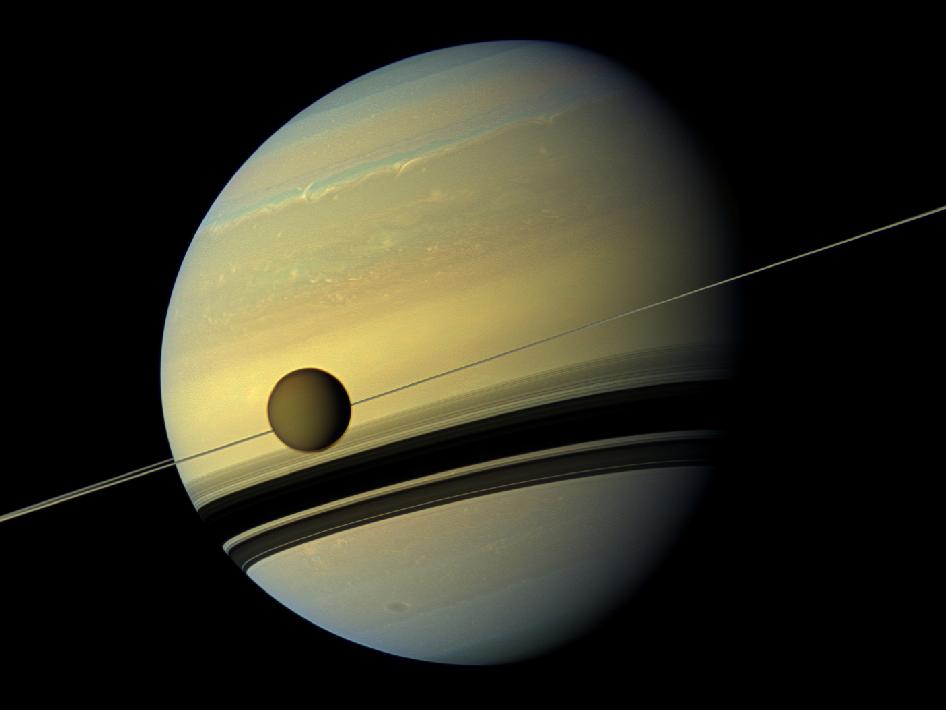 Colorful Colossi and Changing Hues
Colorful Colossi and Changing Hues
A giant of a moon appears before a giant of a planet undergoing seasonal
changes in this natural color view of Titan and Saturn from NASA's Cassini
spacecraft.
Titan, Saturn's largest moon, measures 3,200 miles, or 5,150
kilometers, across and is larger than the planet Mercury. Cassini scientists
have been watching the moon's south pole since a vortex appeared in its
atmosphere in 2012. See PIA14919 and PIA14920 to learn more about this mass of
swirling gas around the pole in the atmosphere of the moon.
As the
seasons have changed in the Saturnian system, and spring has come to the north
and autumn to the south, the azure blue in the northern Saturnian hemisphere
that greeted Cassini upon its arrival in 2004 is now fading. The southern
hemisphere, in its approach to winter, is taking on a bluish hue. This change is
likely due to the reduced intensity of ultraviolet light and the haze it
produces in the hemisphere approaching winter, and the increasing intensity of
ultraviolet light and haze production in the hemisphere approaching summer. (The
presence of the ring shadow in the winter hemisphere enhances this effect.) The
reduction of haze and the consequent clearing of the atmosphere makes for a
bluish hue: the increased opportunity for direct scattering of sunlight by the
molecules in the air makes the sky blue, as on Earth. The presence of methane,
which generally absorbs in the red part of the spectrum, in a now clearer
atmosphere also enhances the blue.
This view looks toward the northern,
sunlit side of the rings from just above the ring plane.
This mosaic
combines six images -- two each of red, green and blue spectral filters -- to
create this natural color view. The images were obtained with the Cassini
spacecraft wide-angle camera on May 6, 2012, at a distance of approximately
483,000 miles (778,000 kilometers) from Titan. Image scale is 29 miles (46
kilometers) per pixel on Titan.
The Cassini-Huygens mission is a
cooperative project of NASA, the European Space Agency and the Italian Space
Agency. The Jet Propulsion Laboratory, a division of the California Institute of
Technology in Pasadena, manages the mission for NASA's Science Mission
Directorate, Washington, D.C. The Cassini orbiter and its two onboard cameras
were designed, developed and assembled at JPL. The imaging operations center is
based at the Space Science Institute in Boulder, Colo.
For more
information about the Cassini-Huygens mission visit http://saturn.jpl.nasa.gov . The Cassini
imaging team homepage is at http://ciclops.org .
Image Credit: NASA/JPL-Caltech/SSI
